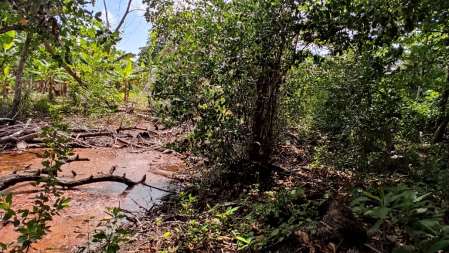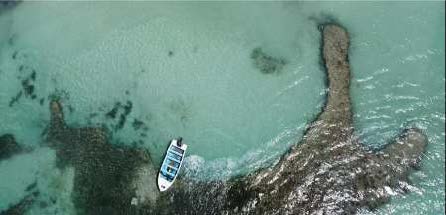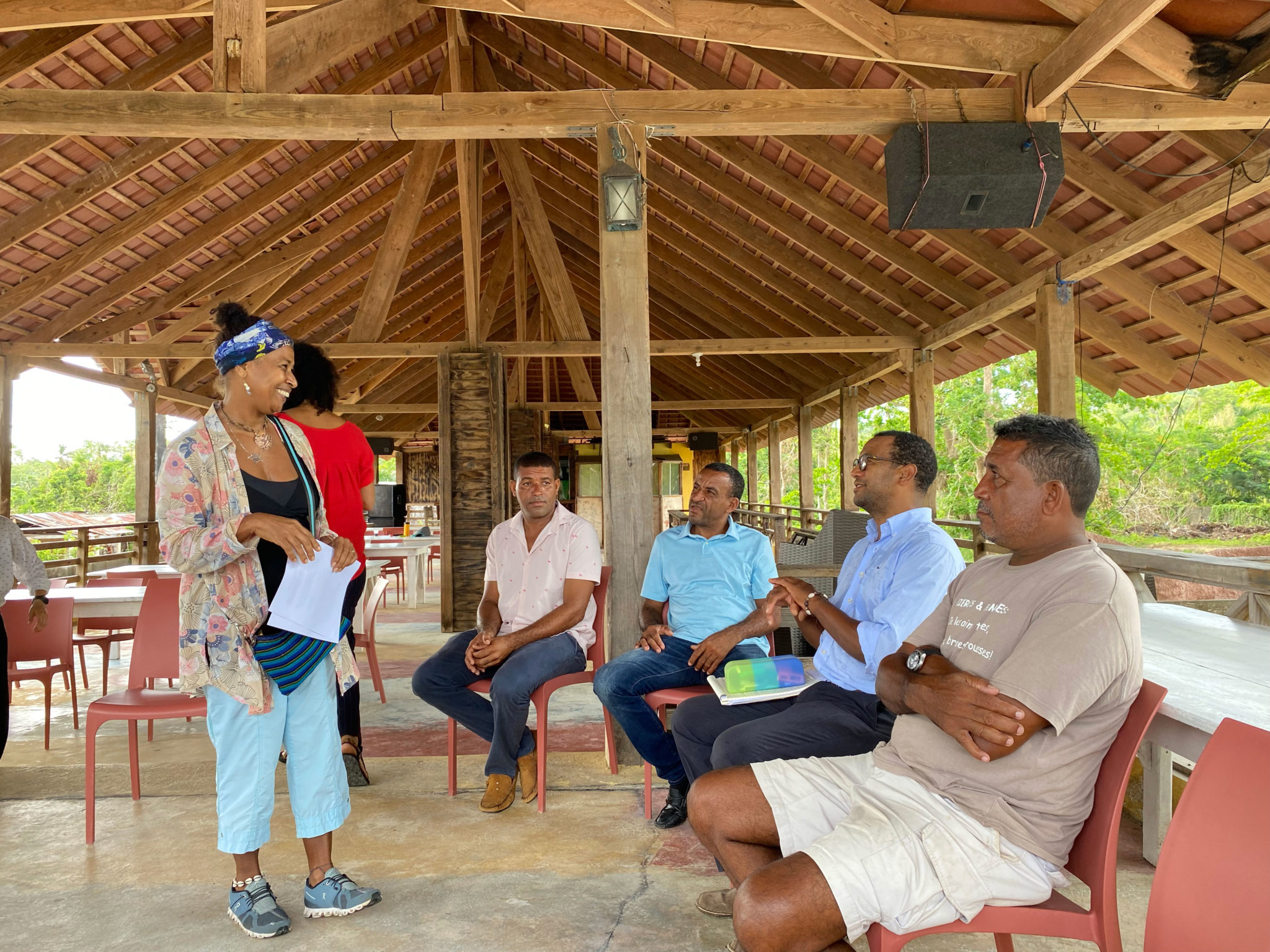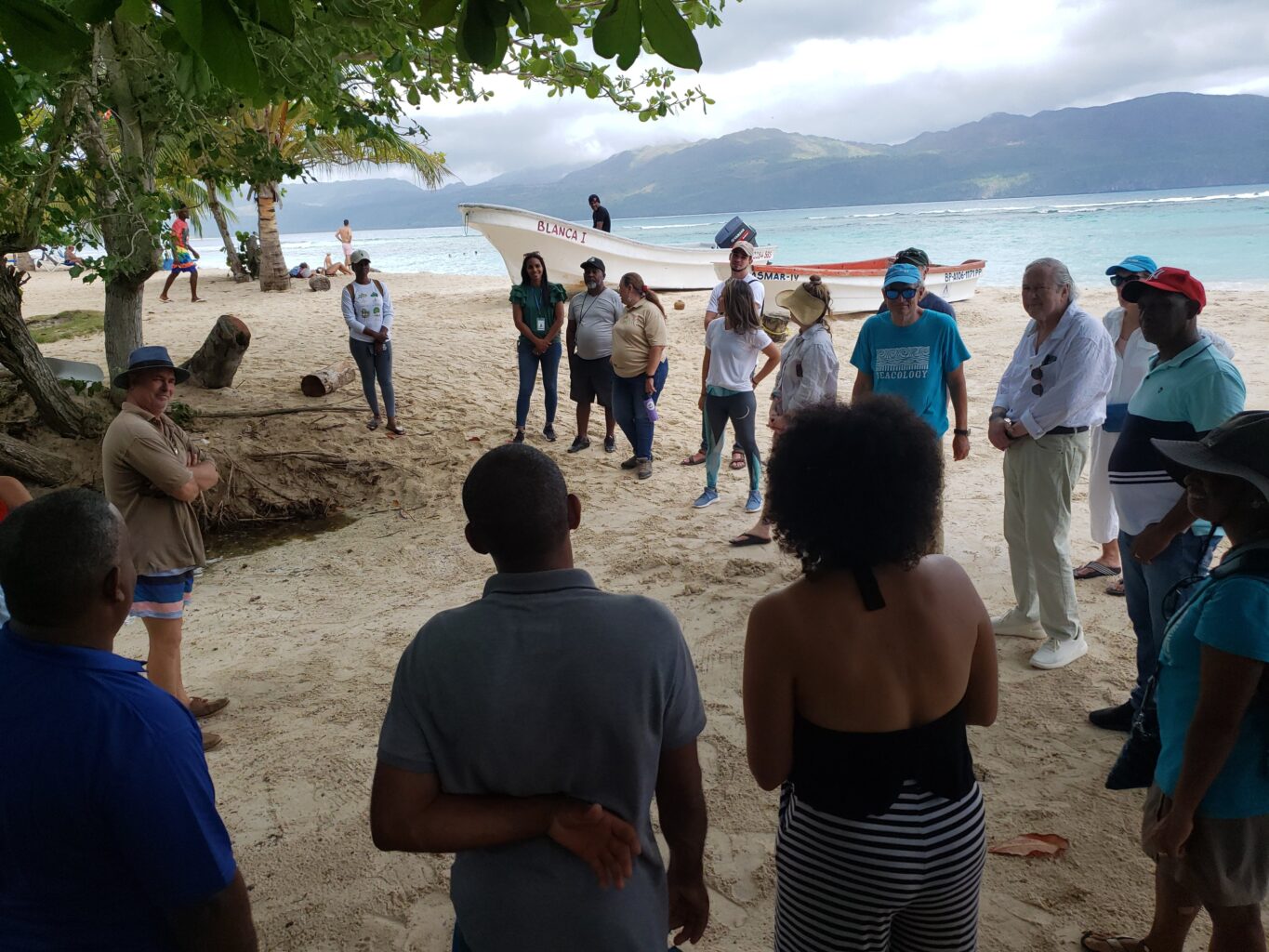The white sands of La Playita are a major tourist attraction. In the seagrass off the beach, there are conch and other mollusks, crustaceans, and an abundance of fish. Manatees and the occasional leatherback turtle swim by. In the forest area, there are endemic Hispaniolan slider turtles, mangrove crabs, and a variety of native and migratory birds. All four of the DR’s mangroves species are found in the forest, which is threatened by invasive species and human activities.
Most residents of nearby Las Galeras (population 6,000) depend on fishing, tourism, or both for their livelihoods. Healthy seagrass supports both. Seagrass meadows are a nursery for fish, reduce the destructive impact of Atlantic waves, and keep the water clear, making the beach attractive to tourists. Local organization Foro Ambiental de Samaná, our project partner in nearby El Astillero, has been engaging local fishers and others community members. It reminds people that one fish, alive in a healthy habitat, brings 20 times more benefits to the community than a dead one.
This project will protect these ecological riches in many different ways. To promote sustainable fishing:
- Fishers will form a cooperative to foster good fishing practices, and will monitor the area.
- Mooring buoys to anchor fishing and tourist boats will be installed to protect the seagrass.
Other activities, publicized through social and other media, are aimed at the public, primarily children and youth:
- Children, adolescents, and young adults will create murals with a seagrass and mangrove theme, under the guidance of a professional painter.
- Local people will learn about the ecological importance of seagrass and mangroves.
- Our project partner will rehabilitate the mangrove area and create an inviting outdoor classroom for local youth and tourists.
- Kids will take part in “Play for the Mangroves” activities, getting sports equipment and environmental education.

















